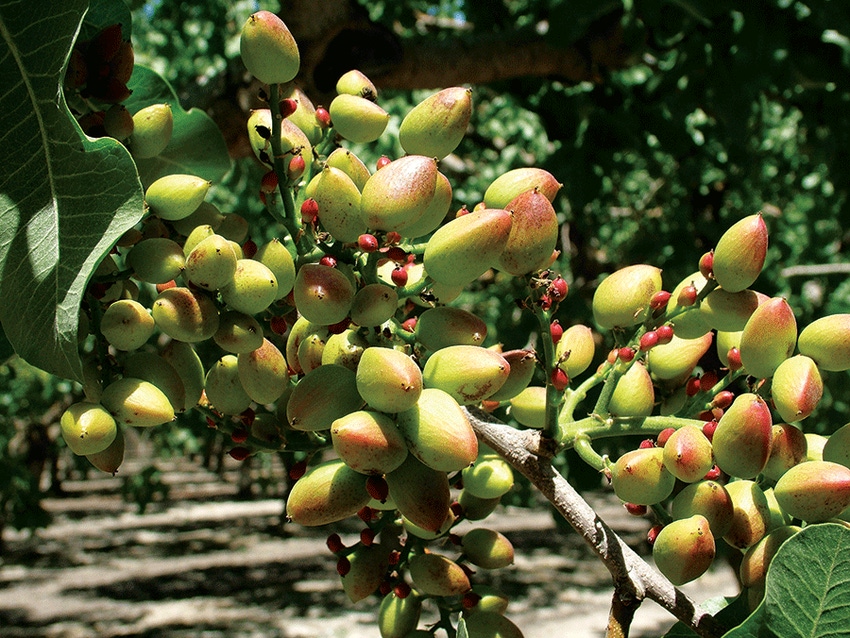
University of California researchers are taking note of a recent case of cankers caused by Phytopthora in a pistachio orchard at Tulare, because such outbreaks with the PG1 rootstock are rare.
The decline and death of about 20 trees in a block of Golden Hills pistachio trees was thought to be unusual because PG1 is generally found to be resistant to Phytopthora, says UC Cooperative Extension Orchard Systems expert Elizabeth Fichtner and Farm advisor Craig Kallsen.
In fact, the rootstock didn’t show any symptoms of cankering, and the camblum appeared healthy, they note in a nut, olive, and prune newsletter published by UCCE Tulare County. Rootstock suckers were actively growing, meaning that the pathogen wasn’t infecting the roots or crown of the tree. The scion, however, showed extensive bleeding and gummosis, which is typical of Phytopthora infection in Pistacia vera trees.
WATERING A FACTOR
“The diagnosis of the problem was possible only after gathering information from the grower on orchard management history,” Fichtner and Kallsen write. The grower recently increased the flow rates of the orchard’s micro-sprinkler nozzles to 14 gallons per hour, and the stream of water was wetting the trees above the graft union.
Also, the grower had recently used surface water rather than groundwater for irrigation, and surface water has a high probability of Phytophora contamination. All of these factors pointed to Phytophthora infection, and samples of the canker tissue soon confirmed the pathogen’s presence.
Almost all fruit and nut trees can develop Phytophthora rot if soil around the base of the plant remains wet for prolonged periods, advises the UC Statewide Integrated Pest Management Program. The pathogen kills trees and shrubs by growing from the roots up through the root crown and into the lower trunk, where it kills the inner bark and causes a browning of the outer layer of sapwood.
In pistachio orchards, trees show poor vigor, leaf yellowing, wilting and scorching, and shoot and branch dieback. Infected roots become necrotic, with dark brown to black discoloration of the cortex and stele, and small roots eventually disintegrate.
Cankers develop at the root crown and may extend above the soil line. Active cankers often ooze and release a light cream exudate in balls, strands, or puddles, the scientists note. This, in and of itself, isn’t proof of Phytophthora infection because other diseases and injuries to the trunk can result in sap release.
CARRIED IN WATER
The pathogens survive in soil and can be carried in surface irrigation water, so prolonged periods of saturated soil are optimal for root infection. The disease is enhanced in poorly drained soils where the orchard has received long periods of flood irrigation, or in trees in lower spots and along creeks that naturally collect water.
Fichtner and Kallsen urge growers to set their irrigation systems to prevent water from splashing on tree trunks. This could include both changing the nozzles to a lower flow rate and moving sprinklers further from the base of trees. As long as the water doesn’t touch the scion, the risk is minimal that Phytophthora will be introduced to the orchard, they add.
To view their entire post, visit https://bit.ly/2Jk1v6P27584
For a UC IPM primer on Phytophthora in pistachios, go to https://bit.ly/2NMF3GN
About the Author(s)
You May Also Like






